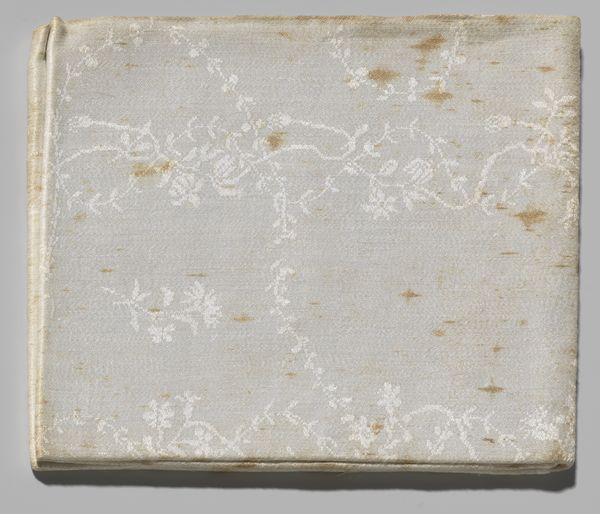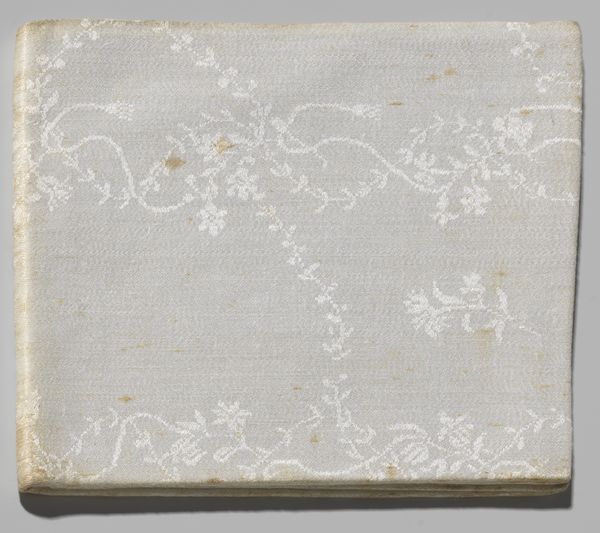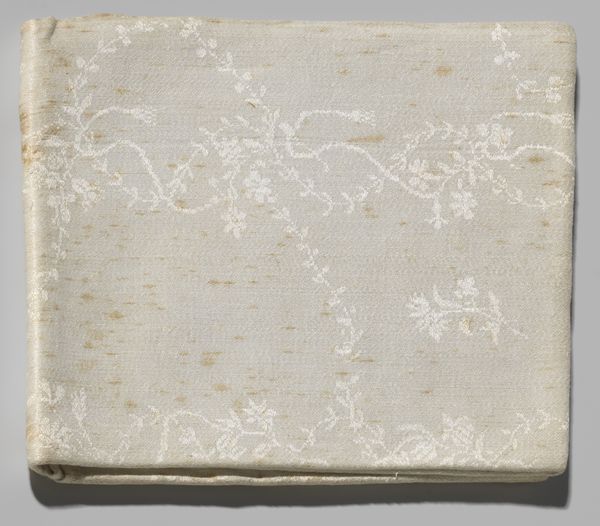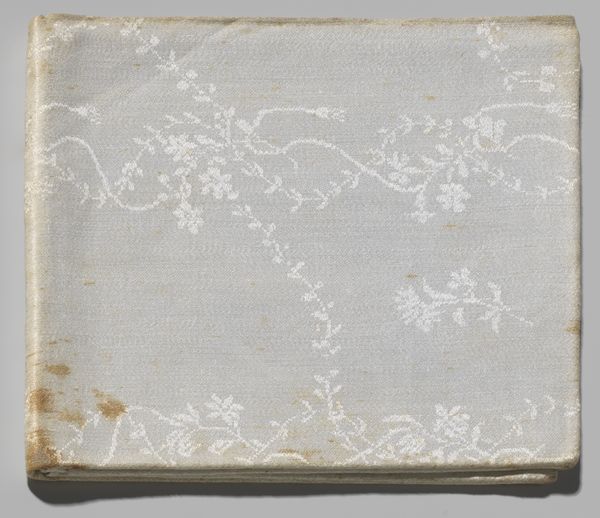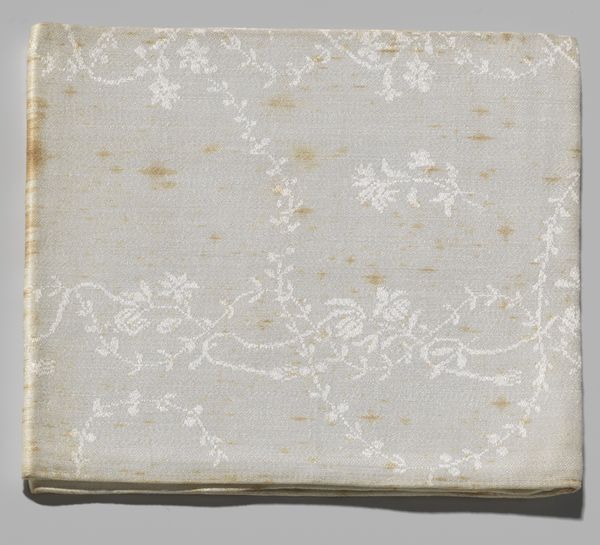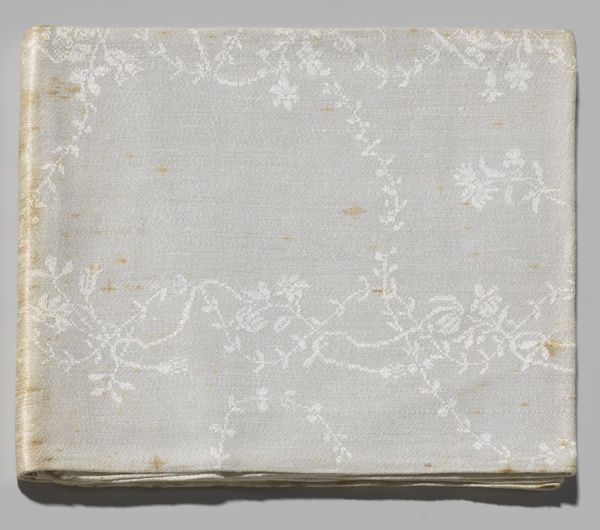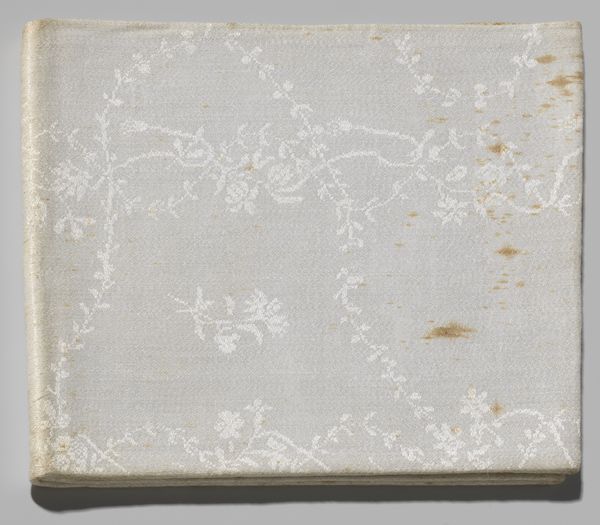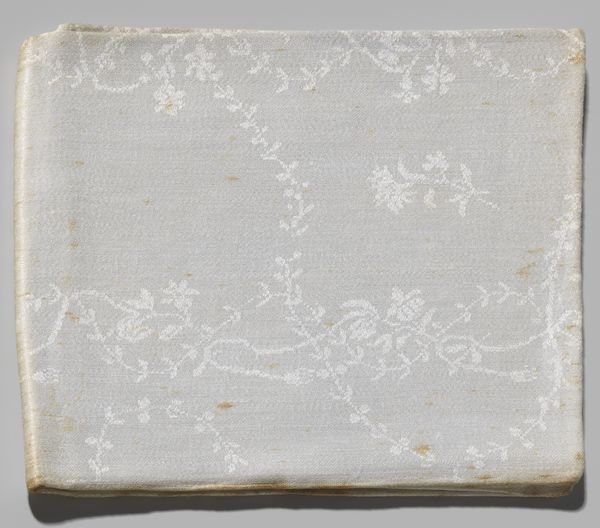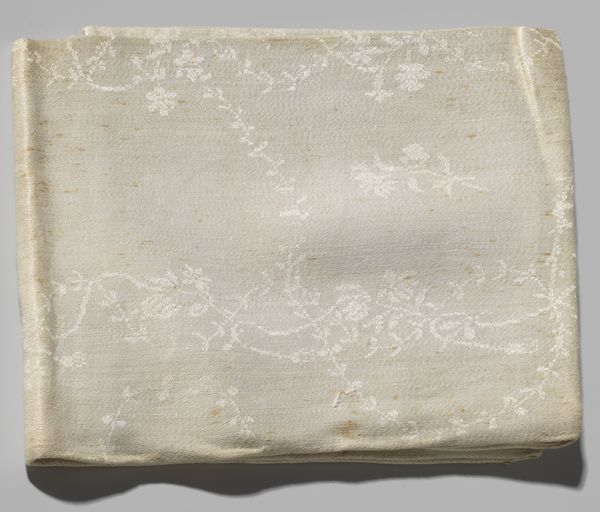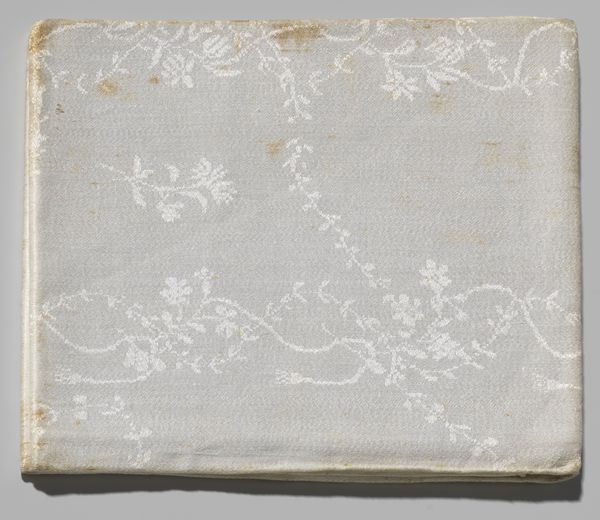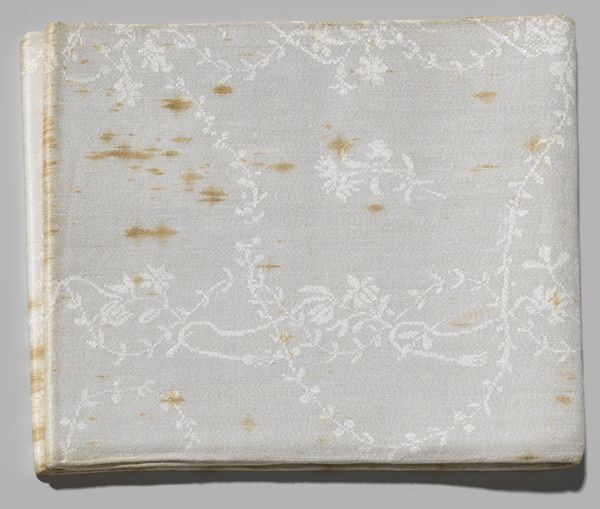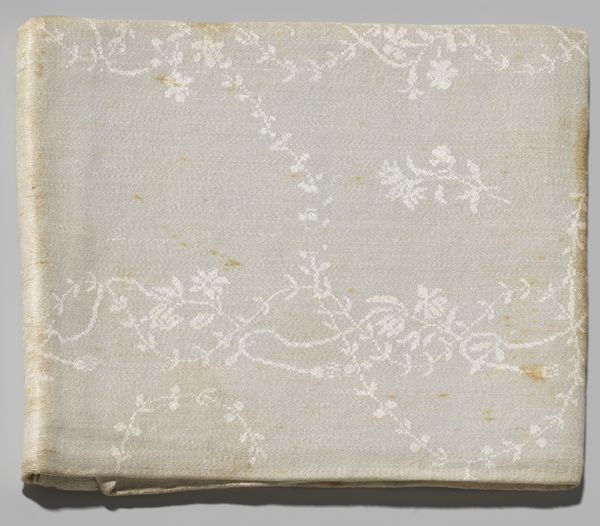
weaving, textile
#
water colours
#
weaving
#
textile
#
romanticism
#
decorative-art
Dimensions: length 99 cm, width 84 cm, height 30 cm, width 28 cm
Copyright: Rijks Museum: Open Domain
Curator: This textile, titled "Servet met bloemen en slingers," dating from around 1800 to 1810, offers a fascinating glimpse into decorative arts of the Romantic era. It appears to be watercolours on woven material. Editor: Immediately, I notice the delicacy and restraint of the design. The muted tones and faint floral patterns suggest a longing, a certain emotional depth. The overall composition, despite the simplicity, feels quite balanced, though slightly marred by time, wouldn't you agree? Curator: Precisely, its current condition speaks volumes. These stains and wear aren't mere imperfections; they are evidence of a life lived, a testament to the object's utility and the hands that have touched it. The creation of the textile and watercolor piece suggests a confluence of artistic skills often marginalized as "craft" within art historical narratives. Who wove this? What were their wages? Who used the textile afterward, and what were the economic relationships involved? Editor: I’m drawn to the repetition and variation within the floral garlands. It echoes classical motifs while adopting a softened, almost wistful interpretation. The colour and use of thin, elegant line gives it this quality. From my view, this is an example of a piece aspiring to the neoclassical ideal. Curator: It certainly demonstrates the aesthetic preferences of its time, but its production is inextricably linked to social and economic realities. Understanding the manufacturing process, the availability of materials, and the role of textile production in the economy can provide insights into the artwork's value, beyond aesthetics. We should see the flowers not only as pretty decorative art but also as symbols that stood for class. The textile also represents labor and material excess of an elite in control. Editor: And, in turn, its function could well have extended beyond practical use. The piece, even worn, still hints at a former sophistication. It possesses a beauty which still moves us, speaking to a sensitivity and refinement we continue to value today. The use of simple form to enhance emotional significance cannot be ignored. Curator: Perhaps we can say that viewing its elegance with knowledge of its process only deepens our understanding of the artwork and of an era. Editor: An illuminating dialogue, and in some sense, we met halfway. By considering structure, feeling, use, and fabrication together we discover more layers.
Comments
No comments
Be the first to comment and join the conversation on the ultimate creative platform.
